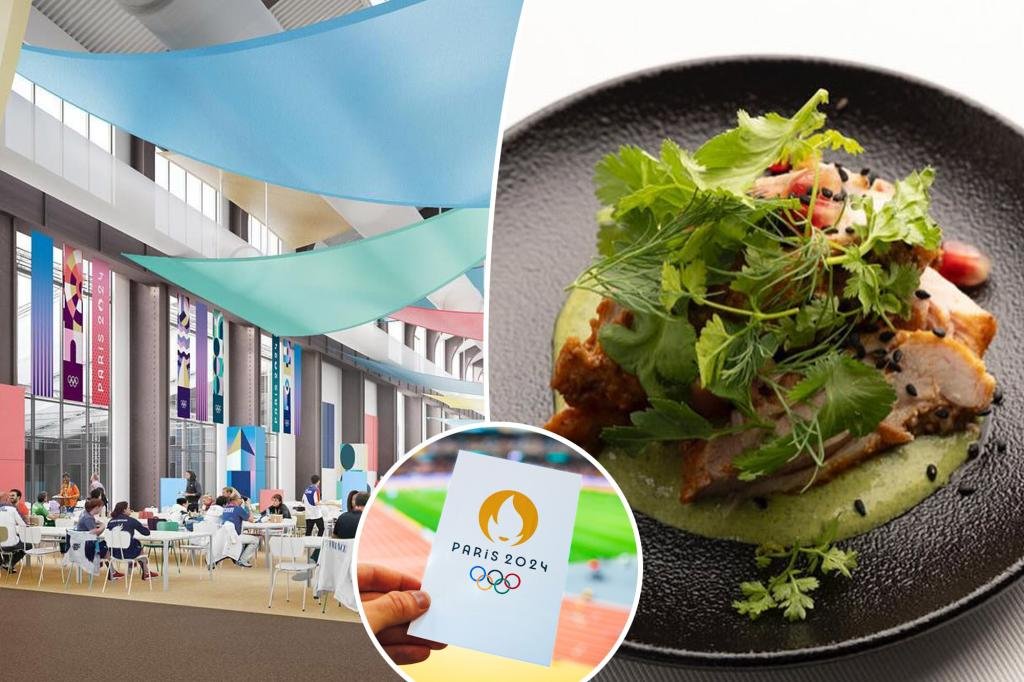People are obsessed with the Olympics.
It’s all about the numbers: the 2024 Paris Summer Olympics will take place from July 26 to August 11 and will feature 10,500 athletes from 206 countries competing in a total of 329 sports, according to ESPN.
But when it comes to food, the numbers get more complicated: 40,000 meals a day, 3 million bananas, and 80,000 pounds of coffee grounds.
Food supplier Sodexo Live! and the chefs who feed the athletes in the Olympic Village have the daunting task of feeding all of the village’s support staff and 10,500 athletes who rely on food for energy. This puts the pressure on the chefs to provide meals that will keep the athletes fed and performing at their best before and after competition.
“It’s going to be amazing to have people from literally all over the world, from 206 countries,” Estelle Lamothe, Sodexo Live!’s director of Olympic Village operations, told Delish. “It’s going to be so much fun to see all the different athletes around the village and experience their cultures, that’s why it’s called a village.”
The 500 recipes on offer are more than just meals: preparing meals for the Olympics involves a lot of logistics, including nutritional needs, sustainable sourcing, variety of options and culinary traditions from around the world.
The tricky part is that there is no one-size-fits-all diet that works for Olympic athletes.
Some athletes eat a lot of carbohydrates, while others prefer a high-protein, low-sugar diet, so the food in the Olympic Village needs to offer a variety of options, including white and red meats, rice, pasta, nuts, yogurt, lean proteins, whole grain breads, fruits, vegetables and electrolyte-rich drinks.
Olympic Village executive chef Charles Guiroy told Food & Wine that the goal is to “meet the nutritional needs of the 15,000 athletes taking part in the Games, respect the eating and tasting habits of more than 200 nationalities and ensure that they feel at home and can perform at their best.”
“For athletes, the menu planning certainly has a special dimension, as nutrition plays a key role in sports performance,” he added. “The menus have been developed in collaboration with specialist sports dietitians and with the involvement of the Paris 2024 Athletes’ Commission.”
The International Olympic Committee initially wanted 1,000 dishes across at least nine culinary themes, but ultimately settled on four: French, Asian, World and African-Caribbean (including Halal).
“Because we are in France, we wanted to offer both quality and real variety in the food, with 500 chef-created recipes, so that athletes from all over the world can find something they like before they compete, and those staying for a few weeks can enjoy the joy of being in France,” Paris 2024 president Tony Estanguet said in a statement.
Once the themes were decided, LaMotte said he worked backwards to find the dishes that best fit each theme and used those to create the menu.
Developed by the company’s chefs Charles Guiroy and Stéphane Chichery, alongside renowned French partner chefs Akram Benallal, Amandine Chaigneau and Alexandre Mazzia, key recipes for the Olympic menu include:
- French Theme: Veggie bourguignon and brandade de mole (salted cod and mashed potatoes)
- Asian Themes: Ground pork with Thai basil and basmati rice, cauliflower and turmeric baked potatoes
- African-Caribbean Themes: Stir-fried peppers, onions, tomatoes and bell peppers with fried shrimps in chermoula sauce
- World Themes: Moussaka with lamb, mint juice sauce and vegetables
Other signature dishes that will be on offer include chicken tandoori, poached egg croissant, artichoke cream, goat cheese and truffle, smoked salted hake with tapioca in vegetable broth, almadó bread salad and za’atar sweet potato with hummus and chimichurri.
When we think of Olympic statistics, most of us think of distances swam, gymnastics points available, medals won, time taken, etc., but what about diet statistics?
Here are some interesting facts about food at the 2024 Summer Olympics.
- Two million meals will be prepared for the athletes, with 40,000 served each day.
- Around 15,000 people will rely on chefs and caterers for proper nutrition.
- Bananas, coffee and chocolate are the only items imported from other countries.
- 3 million bananas brought in for the athletes to eat
- 27 tons (54,000 pounds) of coffee beans and 40 tons (80,000 pounds) of coffee grounds will be reused as fertilizer.
- The Olympics will be held in France, but French fries won’t be served — not because they’re less nutritious, but rather because deep fryers pose a fire hazard when used in large crowds.
- 80 percent of the menu will be from France, with 25 percent coming from sources within 25 kilometers (about 15 miles) of the host city, Paris.
- All meat, milk and eggs will come from France
- Plant-based ingredients account for about one-third of food
- The main dining hall is open 24 hours a day and seats 3,500, making it one of the largest restaurants in the world.
- Village Dining features a salad bar, grill and cheese station, bakery, hot food buffet, fruit bar and dessert bar.
- 600 to 800 baguettes are baked every day for the Olympic athletes.
- 30% of food is organic
- For the first time, 47,000 reusable plates will be installed in the main dining hall instead of disposable ones.
- Avocados have to be imported from far away and require large amounts of water to grow, making them unavailable to people in the Olympic Village.
- There will also be a condiment bar with 85 types of condiments.
- Sodexo Live! chefs show off 500 recipes
- All meals are provided by SodexoLive! – there are no outdoor restaurants within the village and no in-house chefs within the village.
- There is a bakery in the village that hosts workshops on how to make baguettes, croissants and other pastries.
- The 52-acre village will feature 15 different dining options.
- Sodexo Live! also provides meals for millions of attendees

